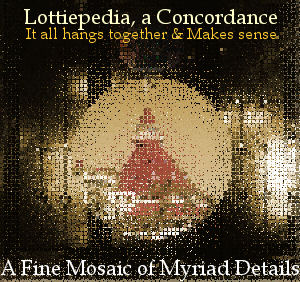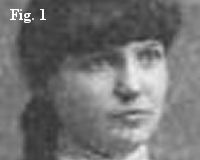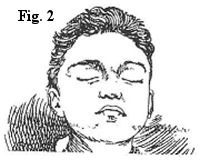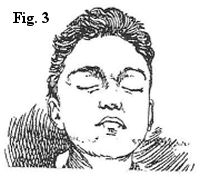Comparison As Best Possible. I have studied the two baseline images (1 and 2) and the elongation (3) and conclude that they are not the same person. The body captured in the police sketch is the same as that of the dead woman at the hotel. The live photo is alleged (by a person in Texas claiming to be a descendant of Tom Morgan) to be that of Kate Morgan. I find that the faces are quite different. Neither woman seems noticeably unattractive, as was the reaction of hotel staff in San Francisco and San Diego when they were shown a photo purported to be of Kate Morgan. Among the points of difference: Kate Morgan's nose is longer and straighter. The position of the ears, the shape of the chin and face, are different. Kate's face is wider in the cheekbones, whereas Lizzie's cheekbones are more delicate and closer together. Lizzie's lower face is wider than her upper face, while Kate's face is somewhat tapered from her wider cheekbones down. Much of what we see in the police sketch is soft tissue that may have changed from shrinkage or embalming, so this comparison will always have only sketchy value (not to make a horrid pun). I take it as yet another indication that the legends and received history are wrong, and that the dead woman was Lizzie Wyllie, or at least not Kate Morgan. TOP Earrings, Moles on Left Cheek. There is yet another point of identification to be discussed, on which hinges the discussion of why (allegedly) the San Diego authorities abruptly changed their I.D. from Lizzie Wyllie to Kate Morgan. The hotel's book Beautiful Stranger states that (on December 4, about five days after death) "(the dead woman) is misidentified as Miss Lizzie Wyllie of Detroit," which is not based on hard evidence, but appears to follow the traditional assumption that she was Kate Morgan. By December 6, the San Diego Union reports that the dead woman was Lizzie Wyllie. During these days, conflicting avenues as to her I.D. are still being pursued, including the search for a Mr. Bernard. In short, there is a stream of confusion and contradiction about who the dead woman might be. On December 4, the Los Angeles Herald reported that Mrs. Wyllie, upon receiving a description of the dead girl ("Height, five and a half feet; complexion fair but sallow; medium length black hair (note: so the sketch shows cropped hair, by the mortician or artist); broad features; high cheekbones; brown eyes; weight 150 pounds; age about 26; good teeth; etc. (clothing)") Mrs. Wyllie confirmed that it was "an exact description of Lizzie." Lizzie is described as attractive, whereas a photo of Kate Morgan found in her trunk in Los Angeles showed her to have "black eyes, large ears, rather large, open face, and somewhat coarse features; her mouth is rather large and lips thick." These are all subjective opinions, but they suggest again that Lizzie and the Beautiful Stranger were attractive, while Kate Morgan was not. Katie Logan was described as 'very pretty,' and she is the one who told another domestic her real name was Lizzie. TOP Moles, Earrings. According to the police in San Diego, the corpse had two small moles on the left cheek, which her mother, Mrs. Wyllie, said precisely matched her daughter Lizzie. On December 8, the Los Angeles Times reports the I.D. changed from Lizzie Wyllie to Katie Logan (the Los Angeles domestic, wrongly assumed to be Kate Morgan, though 'Katie Logan' stated her real name was Lizzie. Blundering, the report confirms that Katie Logan had the same two moles identified on Lizzie. A further point of contention, of far less substance, was that Lizzie was said to have pierced ears (for earrings), while Kate did not. The corpse did not appear to have pierced ears, which led to the incorrect conclusion she was Kate Morgan—however, the earlobes are soft tissue, easily changing in substance and appearance after death, whereas Lizzie's two moles remained unchanged. A remote possibility is that Lizzie (a vain young woman of champagne tastes) had recently pierced lobes, but pawned her silver earrings upon getting in trouble with John Longfield, and that the holes began closing up on their own. I believe the evidence of the moles far outweighs the mention of pierced ears. Katie Logan, Lizzie Wyllie, and the Beautiful Stranger (Mrs. Lottie A. Bernard, the dead woman) were all the same person—and Kate Morgan was someone entirely else. TOP |




